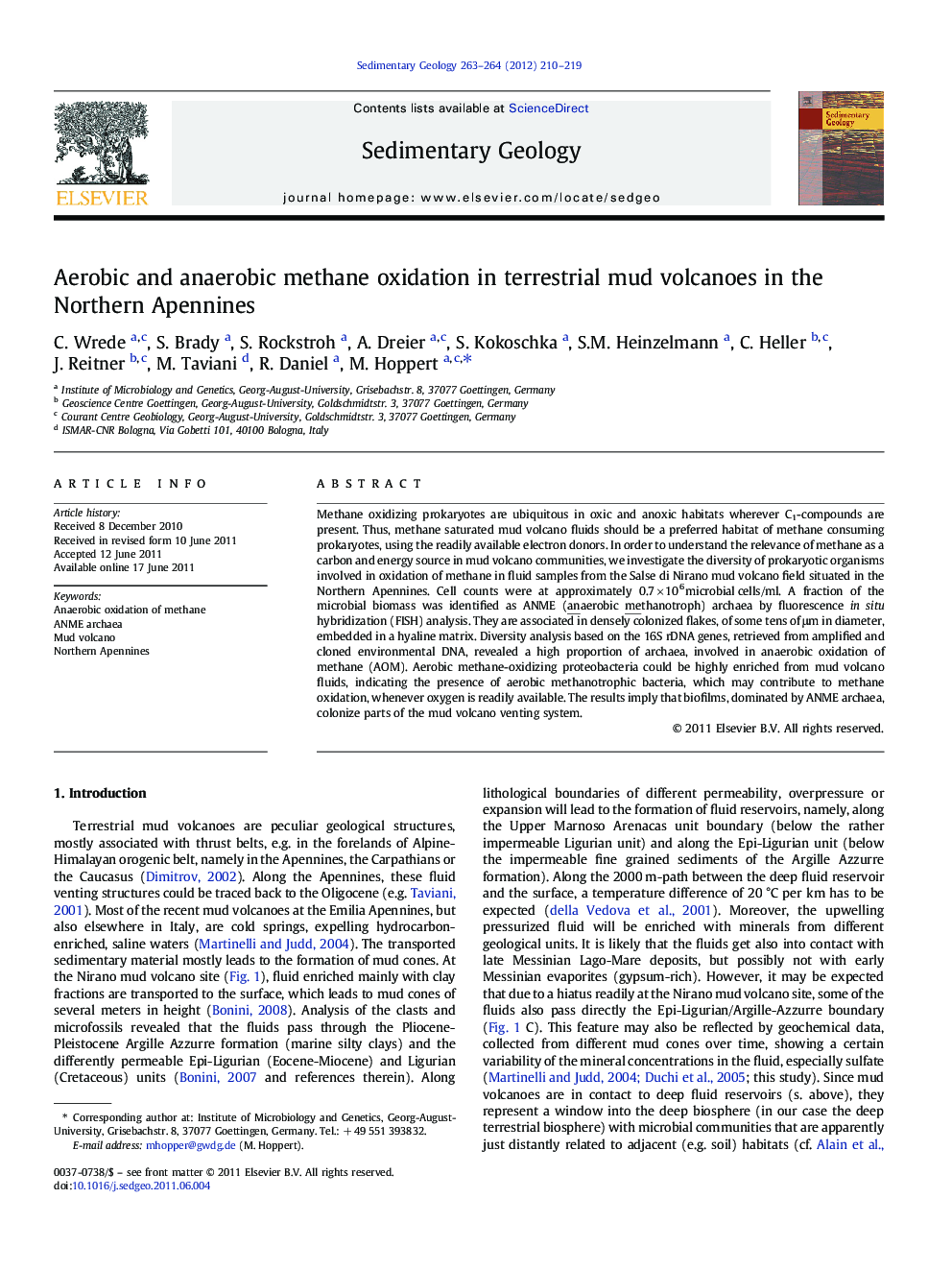| Article ID | Journal | Published Year | Pages | File Type |
|---|---|---|---|---|
| 4689789 | Sedimentary Geology | 2012 | 10 Pages |
Abstract
Methane oxidizing prokaryotes are ubiquitous in oxic and anoxic habitats wherever C1-compounds are present. Thus, methane saturated mud volcano fluids should be a preferred habitat of methane consuming prokaryotes, using the readily available electron donors. In order to understand the relevance of methane as a carbon and energy source in mud volcano communities, we investigate the diversity of prokaryotic organisms involved in oxidation of methane in fluid samples from the Salse di Nirano mud volcano field situated in the Northern Apennines. Cell counts were at approximately 0.7 Ã 106 microbial cells/ml. A fraction of the microbial biomass was identified as ANME (anaerobic methanotroph) archaea by fluorescence in situ hybridization (FISH) analysis. They are associated in densely colonized flakes, of some tens of μm in diameter, embedded in a hyaline matrix. Diversity analysis based on the 16S rDNA genes, retrieved from amplified and cloned environmental DNA, revealed a high proportion of archaea, involved in anaerobic oxidation of methane (AOM). Aerobic methane-oxidizing proteobacteria could be highly enriched from mud volcano fluids, indicating the presence of aerobic methanotrophic bacteria, which may contribute to methane oxidation, whenever oxygen is readily available. The results imply that biofilms, dominated by ANME archaea, colonize parts of the mud volcano venting system.
Related Topics
Physical Sciences and Engineering
Earth and Planetary Sciences
Earth-Surface Processes
Authors
C. Wrede, S. Brady, S. Rockstroh, A. Dreier, S. Kokoschka, S.M. Heinzelmann, C. Heller, J. Reitner, M. Taviani, R. Daniel, M. Hoppert,
